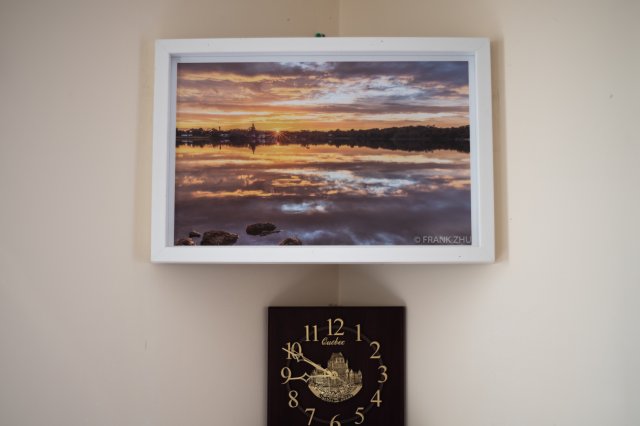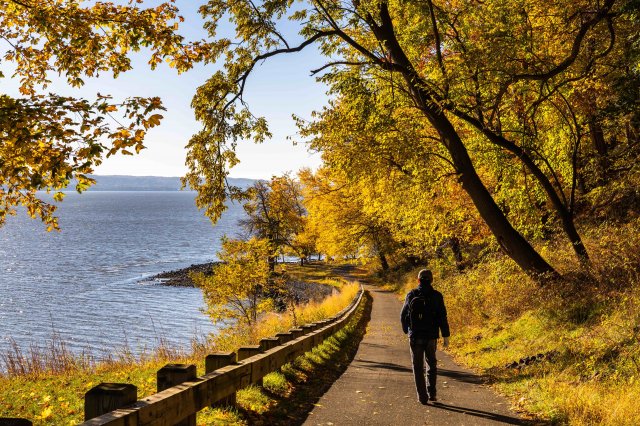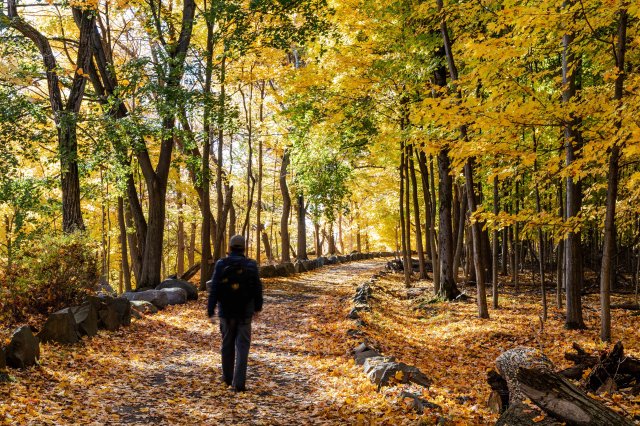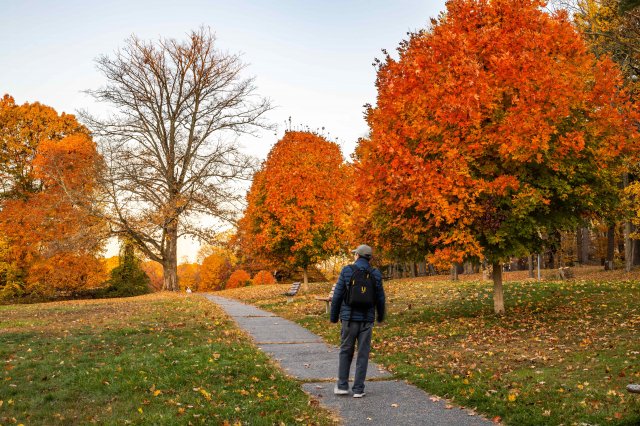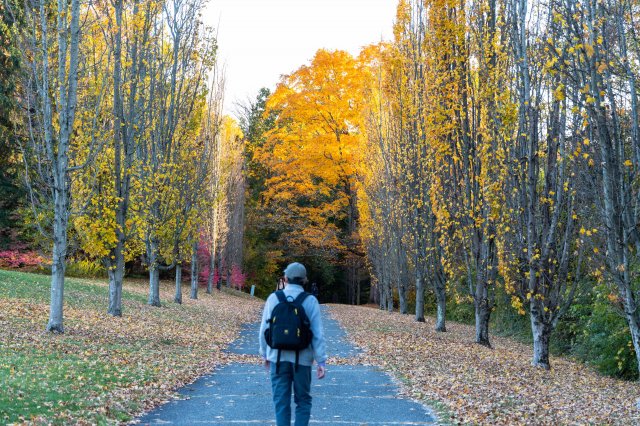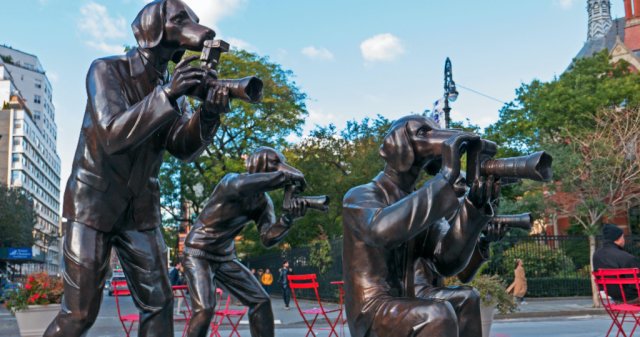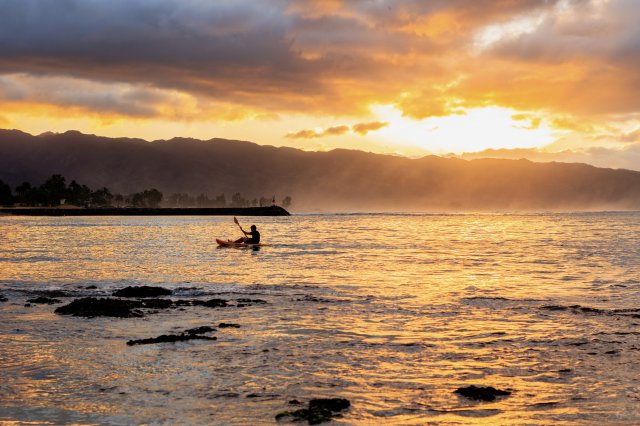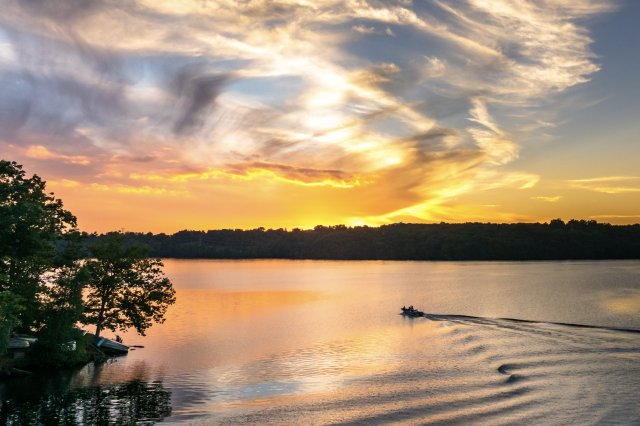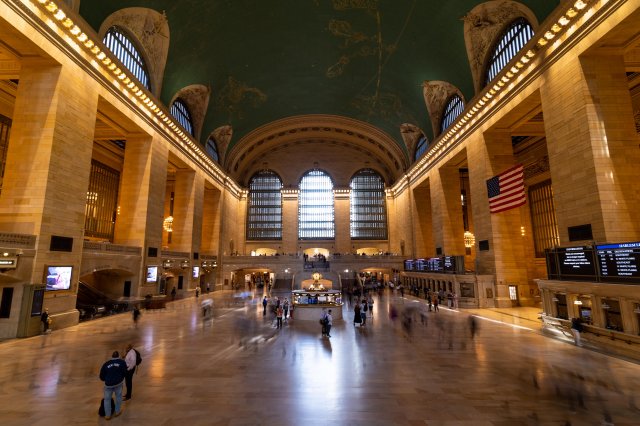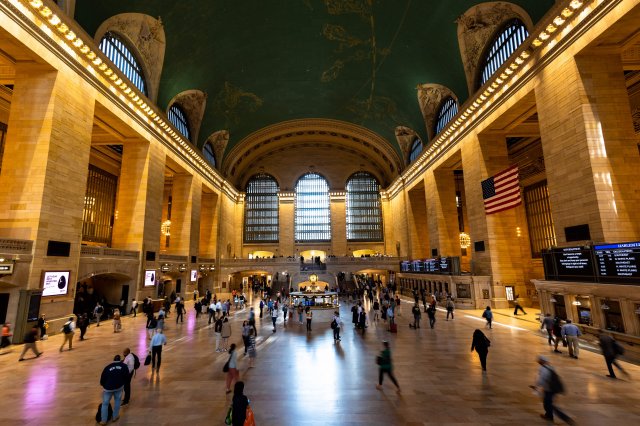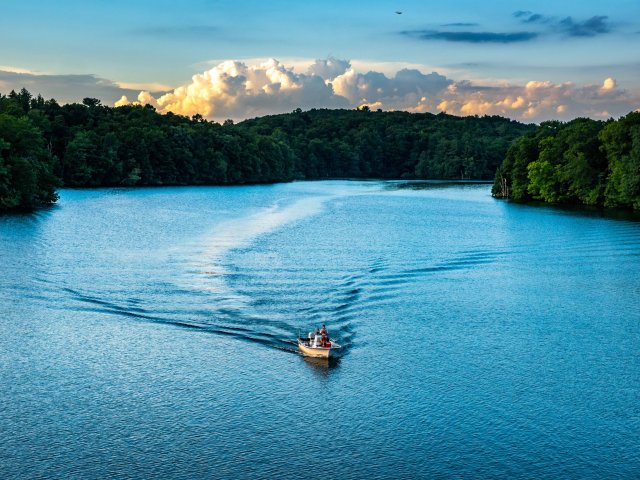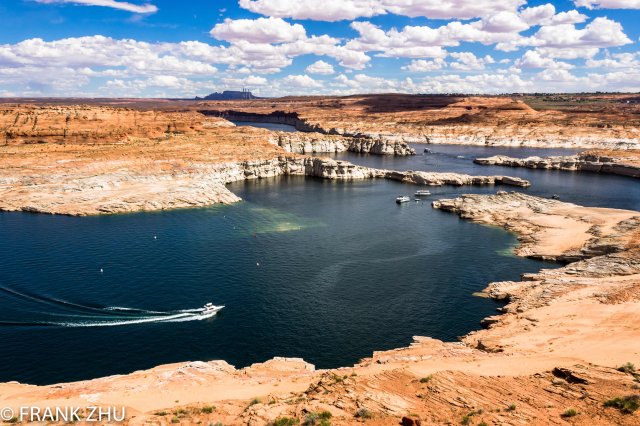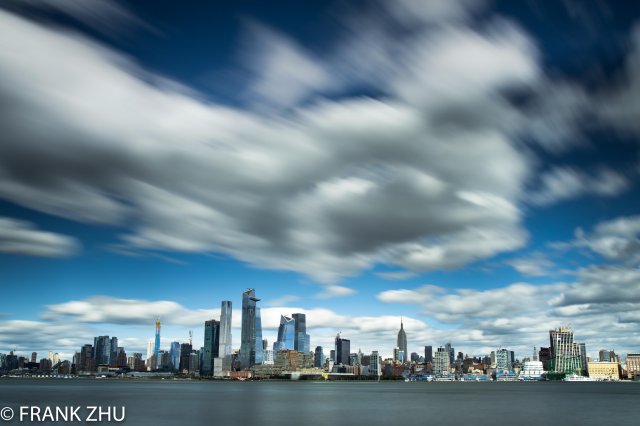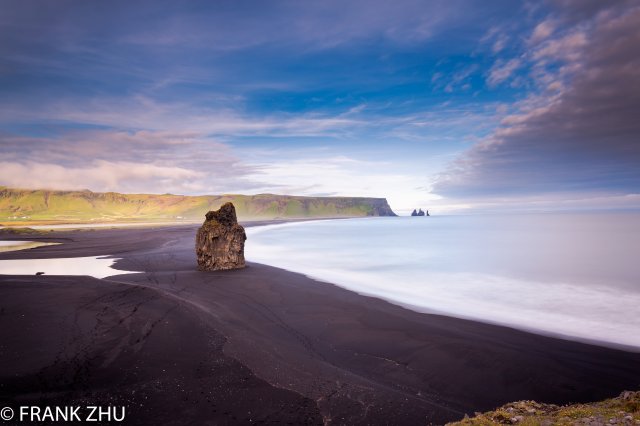Answer: First of all, the most important is to choose a camera that looks attractive to you and you will be happy to take it with you. If you don't like it, you won't take it and use it. I keep saying to my beginner friends that the best camera is the one that you have in your pocket when you need it. Secondly, I would recommend an interchangeable lens camera. At the beginning, you may only need one lens, either a prime lens or a zoom lens. As you develop your skills more, you will need more lenses. An interchangeable lens camera gives you room for growth. Thirdly, if you are serious about photography, I recommend a full frame camera. A full frame camera has a sensor that is much larger than an APS-C or Micro Four Thirds camera. The larger the sensor is, the better quality the camera can produce, especially in low light situations. A full frame sensor also gives you more control over the depth of field, which means you can more easily separate the object and the background in your images by blurring the background. Of course, full frame cameras are usually more expensive. But it would cost you more if you spend little money for a cheap one at the beginning and then change your mind later on. When it comes to buying camera gear, my motto is "buy nice or buy twice." Fourthly, don’t fall into the trap that the more pixels your camera has the better quality pictures you will take. The quality of your pictures have little to do with your gear. It is your skills and experience that largely determines how good your pictures will be. An average camera with about 20 MP is all you need, in my opinion. Finally, it doesn’t matter which brand you choose because all camera companies nowadays produce cameras good enough for every type of use. Depending on what type of photography you do, you can choose which camera best suits your needs. Since I started with Canon cameras, I have more experience with the Canon gear and I’d say the Canon is a reliable brand. The R6, for example, is a very good choice. It is a full frame mirrorless, interchangeable lens camera that will suit almost all your purposes, whether it is landscape, travel, or portrait. As to lenses, I recommend that you start with a prime lens, such as a 50mm or 35mm focal length. Once you have learned the basic skills, buy a 24-70mm zoom lens. Eventually, you will find it necessary to buy more lenses for different situations. You will also learn that skills and technique are more important than your gear. By that time, you will not be bothered with what camera gear you have.
4. Question: Why a beginner photographer should start with a 50mm lens?
Answer: The first reason is obvious – a 50mm lens is usually cheap regardless of its brand. This is because its optical structure is usually simpler than lenses of other focal lengths. Therefore, it is easier to design and construct. Many photographers call this lens a “nifty fifty”.
However, the more important reason why a beginner photographer should start with such a lens is that it is the easiest lens to learn photography with. In the profession of photography, the 50mm lens is known as the normal lens because it doesn’t distort objects. It gives you a 1x magnification. Everything in the photo looks about as close or far away as if it did in the real life. It adds “no effect” to the picture. Other focal lengths will change perspectives and add effect. For example, a wide angle lens makes the foreground of your picture look bigger than it appears in your eyes. A long lens brings distant objects closer in your picture. But a 50mm lens makes your pictures look realistic, just as you see it in real life. Its 1x magnification gives you the identical perspective as your normal eye’s viewing perspective. This makes photography much easier for a beginner. By the way, many professional photographers prefer to use this lens for the same reason.
Answer: For one thing, doing landscape photography makes them conscious of all the aesthetic elements not only in a picture but in everything. They don’t merely see the beauty of an object, they also feel the urge to make it look more beautiful. Their skillful use of light, colors, shapes and patterns, and different perspectives, or the inclusion or exclusion of an element, all enables them to achieve such a purpose. Thus, he or she is not only a photographer, but also an artist.
8. Question: Why are my pictures not sharp?
Answer: First of all, make sure that you have a good lens. A cheap lens, such as a kit lens (the lens that is bundled with your camera body), is usually not as sharp as a pro lens in overall picture quality, or it may have some sharpness in the center, but lots of bluriness on the edges. An expensive lens, on the other hand, is constructed with higher quality glass or assembled with more precision to ensure that you have sharpness from edge to edge in your picture.
If upgrading your lens is not an option, then you should master a few skill. First, use the aperture in the right way because aperture value plays a big role. Usually, you have the lowest sharpness if you use the lens wide open (the lowest aperture value). You will have better and better quality if you increase the aperture value (the aperture on the lens becomes smaller and smaller), for example, from f2.8 to f4 or higher, until you reach a point which is called diffraction when the picture quality goes down. Lenses are different, so you will need to experiment with your lens to find where the diffraction point is. Secondly, your aperture also affects the depth of field (how much space from foreground to background in your picture that is on focus). If the subject is not on focus, it is of course not sharp. The lower the aperture value is, the shallower the depth of field is, and therefore the less space is on focus. So you should use bigger aperture value if you want to make both background and foreground sharp. Unless you take portrait photos (which could be another topic of discussion), I wouldn’t recommend using the lowest aperture values on your lens. Finally, if your shutter speed is not fast enough or your camera is shaking, you will have blurred pictures, which is often the case with beginner photographers. To prevent camera shaking, you can do three things: first, increase the shutter speed, 2. choose a camera or lens that has stabilization function, and 3. use a tripod. However, if your subject is moving, the only thing you can do is to increase your shutter speed (use smaller aperture or higher ISO) because the stabilization function or the tripod can’t freeze your subject.
Always keep in mind that it takes skills and experience to take sharp pictures.
9. Question: Why shooting in Raw is better than shooting in jpeg?
Answer: Most beginners tend to shoot in jpeg format because that’s the easiest way to shoot. Don't get me wrong -- shooting in jpeg is okay, especially when you have a very good camera. However, if you are not happy with just being a snap shooter and want to become a good photographer, shooting in Raw is a must. When you take a photo, the camera sensor captures a huge amount of data and stores the data in a file waiting to be processed for displaying on a screen. A jpeg picture directly out of the camera is a file which is already processed by the camera. Basically, the processing is done by the sensor engineer and software designer, which may or may not be to your liking. What is worse is that a jpeg file usually leaves very little room for the photographer to retouch because most of its data is already lost. Raw files, on the other hand, retain all the data which the photographer can process by using software of their own choice. There is much more room for the photographer to manipulate according to their own taste. For example, if you have underexposed or overexposed some areas in your picture, you will be able to recover shadows or highlights in post-processing more easily and without creating excessive grainy noise, which you can’t do with jpeg pictures. Raw files have particular benefits when it comes to changing colors or white balance in post-processing. On the other hand, it is almost impossible to change white balance with a jpeg picture if you didn’t set it correctly in the first place. Another benefit of Raw files is the ability to get much better details. This is both because Raw files contain more data and because the post processing software is much more powerful than the one found in your camera in terms of sharpening and noise reduction. Finally, it should be pointed out that a Raw file can't be displayed on a screen. It must be processed and turned into a jpeg file, either by the camera or by you yourself, for it to show on your computer or phone screen as a picture.
Question: What is aperture? Why would you recommend a wide aperture lens?
Question: Let me first explain what aperture is. In photography terms, an aperture is a hole in a lens which allows light come in to the sensor of the camera. The aperture is like the pupil in a human eye. Its size can be changed, just as a pupil widens or shrinks to adjust to weak or strong light. The size changes of an aperture are numbered. The larger the number is, the smaller the aperture is. The maximum aperture is usually displayed on the lens, such as f2.8 or f1.4.
The smaller the f number is, the better the lens is and therefore the more expensive it will be. A wide aperture lens is also called a fast lens because, with a wide aperture, your shutter speed will be high.
Now, why is a lens with a wider aperture better? There are many reasons. But the most important one is that it lets in more light so that you can shoot in low light conditions such as in a museum or in a church or where flash is not allowed. With a less expensive lens (smaller aperture), your camera will have to increase its ISO (if it is in Auto mode) in order to reach a fast enough shutter speed in dim lit indoor situations. When a higher ISO is used, more noise is produced in your picture. Another advantage of a wider aperture lens is its capability of blurring background, thus making the subject stand out. But this is another topic for another discussion.
Whether you should purchase a wider aperture lens depends on what type of photography you do. If you mostly shoot indoors, or visit museums when travelling, or if you do portraiture or sports, you should get a lens with a maximum aperture of f2.8, f1.8, or even f1.4. If you mostly do landscape, you don’t need a wide aperture lens because you can always use a tripod when you have to use a slow shutter speed. But hey, if you can afford a better lens, why not?
